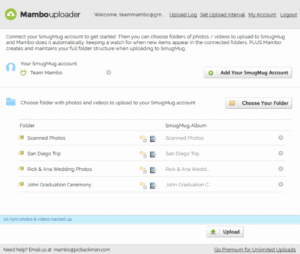-
Table of Contents
- Top 10 Monitors for Graphic Designers: A Comprehensive Review
- Factors to Consider When Choosing a Monitor for Graphic Design
- The Best Monitors for Color Accuracy in Graphic Design
- Budget-Friendly Monitors for Aspiring Graphic Designers
- Ultra-Wide Monitors: Enhancing Productivity for Graphic Designers
- Q&A
“Unleash your creativity with the perfect monitor for graphic design.”
When it comes to choosing a monitor for graphic design, there are several factors to consider. The monitor’s color accuracy, resolution, size, and connectivity options play a crucial role in ensuring a seamless and efficient workflow for graphic designers. In this introduction, we will explore the key features to look for when selecting a monitor that caters specifically to the needs of graphic designers.
Top 10 Monitors for Graphic Designers: A Comprehensive Review
Which monitor to choose if you plan to be a graphic designer
When it comes to graphic design, having a high-quality monitor is essential. The right monitor can make all the difference in terms of color accuracy, resolution, and overall performance. With so many options on the market, it can be overwhelming to choose the best one for your needs. That’s why we have compiled a comprehensive review of the top 10 monitors for graphic designers.
First on our list is the Dell UltraSharp U2720Q. This 27-inch monitor boasts a 4K resolution and an IPS panel, providing stunning visuals and accurate colors. It also offers a wide color gamut, making it ideal for graphic design work. The Dell UltraSharp U2720Q is a reliable choice for any graphic designer.
Next up is the LG 27UK850-W. This monitor features a 27-inch 4K display with an IPS panel. It offers excellent color accuracy and a wide color gamut, making it perfect for graphic design work. Additionally, it has a USB-C port, allowing for easy connectivity with laptops and other devices.
For those on a budget, the BenQ PD2700U is a great option. This 27-inch monitor offers a 4K resolution and an IPS panel. It provides accurate colors and a wide color gamut, making it suitable for graphic design work. The BenQ PD2700U is a cost-effective choice without compromising on quality.
If you’re looking for a larger display, the LG 34WK95U-W is worth considering. This 34-inch ultrawide monitor offers a 5K resolution and an IPS panel. It provides stunning visuals and accurate colors, making it perfect for graphic design work. The LG 34WK95U-W is a premium choice for those who want a larger workspace.
Another excellent option is the ASUS ProArt PA329Q. This 32-inch monitor offers a 4K resolution and an IPS panel. It provides exceptional color accuracy and a wide color gamut, making it ideal for graphic design work. The ASUS ProArt PA329Q also comes with a built-in color calibration tool, ensuring precise and consistent colors.
For Mac users, the Apple Pro Display XDR is a top-of-the-line choice. This 32-inch monitor offers a 6K resolution and an IPS panel. It provides unparalleled color accuracy and a wide color gamut, making it perfect for graphic design work. The Apple Pro Display XDR is a premium option for those who demand the best.
If you’re looking for a curved monitor, the Samsung CJ791 is worth considering. This 34-inch ultrawide monitor offers a 1440p resolution and a VA panel. It provides vibrant colors and a wide color gamut, making it suitable for graphic design work. The Samsung CJ791’s curved display enhances immersion and provides a unique viewing experience.
For those who prioritize color accuracy above all else, the EIZO ColorEdge CG319X is the monitor to choose. This 31-inch monitor offers a 4K resolution and an IPS panel. It provides exceptional color accuracy and a wide color gamut, making it perfect for professional graphic design work. The EIZO ColorEdge CG319X is a high-end option for those who require precise color reproduction.
If you’re on a tight budget, the ViewSonic VP2458 is a great choice. This 24-inch monitor offers a 1080p resolution and an IPS panel. It provides accurate colors and a wide color gamut, making it suitable for graphic design work. The ViewSonic VP2458 is an affordable option without compromising on quality.
Lastly, the HP DreamColor Z27x G2 is a monitor that caters to the needs of professional graphic designers. This 27-inch monitor offers a 4K resolution and an IPS panel. It provides exceptional color accuracy and a wide color gamut, making it perfect for demanding graphic design work. The HP DreamColor Z27x G2 is a high-performance option for those who require the best.
In conclusion, choosing the right monitor is crucial for graphic designers. The Dell UltraSharp U2720Q, LG 27UK850-W, and BenQ PD2700U are excellent options for those on a budget. The LG 34WK95U-W, ASUS ProArt PA329Q, and Apple Pro Display XDR are premium choices for those who want the best. The Samsung CJ791, EIZO ColorEdge CG319X, ViewSonic VP2458, and HP DreamColor Z27x G2 cater to specific needs and preferences. Ultimately, the best monitor for you will depend on your budget, workspace, and desired features.
Factors to Consider When Choosing a Monitor for Graphic Design
When it comes to graphic design, having the right monitor is crucial. A high-quality monitor can make a significant difference in the accuracy and clarity of your work. With so many options available on the market, it can be overwhelming to choose the right one. In this article, we will discuss the factors to consider when choosing a monitor for graphic design.
One of the most important factors to consider is the resolution of the monitor. A higher resolution means more pixels, which translates to sharper and more detailed images. For graphic design, a minimum resolution of 1920×1080 pixels is recommended. However, if you want to take your work to the next level, consider a monitor with a 4K resolution. This will provide you with an incredibly sharp and detailed display, allowing you to see every minute detail of your designs.
Another factor to consider is color accuracy. As a graphic designer, you need a monitor that can accurately reproduce colors. Look for a monitor that covers a wide color gamut, such as Adobe RGB or DCI-P3. These color spaces offer a broader range of colors, allowing you to create more vibrant and lifelike designs. Additionally, consider a monitor with a high color depth, such as 10-bit or 12-bit. This will ensure smooth color gradients and prevent banding in your designs.
The size of the monitor is also an important consideration. A larger monitor can provide you with more screen real estate, allowing you to work on multiple projects simultaneously or have more space for your tools and palettes. However, keep in mind that a larger monitor may require you to sit further away from it, which can affect your viewing experience. Consider the size of your workspace and your preferred viewing distance when choosing the size of your monitor.
Response time is another factor to consider, especially if you work with fast-moving visuals or animations. A monitor with a low response time will minimize motion blur and ghosting, ensuring that your designs are displayed accurately. Look for a monitor with a response time of 5ms or lower for optimal performance.
Connectivity options are also worth considering. Make sure the monitor you choose has the necessary ports to connect to your computer or other devices. HDMI and DisplayPort are common options, but also check for USB ports or Thunderbolt connectivity if you need to connect additional peripherals.
Lastly, consider the ergonomics of the monitor. Look for a monitor that is adjustable in terms of height, tilt, and swivel. This will allow you to find the most comfortable viewing position, reducing strain on your neck and eyes during long hours of work. Additionally, consider a monitor with an anti-glare coating to minimize reflections and improve visibility in different lighting conditions.
In conclusion, choosing the right monitor for graphic design is essential for achieving accurate and high-quality results. Consider factors such as resolution, color accuracy, size, response time, connectivity options, and ergonomics when making your decision. By carefully evaluating these factors, you can find a monitor that meets your specific needs and enhances your graphic design workflow.
The Best Monitors for Color Accuracy in Graphic Design
When it comes to graphic design, color accuracy is of utmost importance. As a graphic designer, you need a monitor that can accurately display colors, allowing you to create designs that look just as vibrant and true-to-life on screen as they do in print. With so many options available on the market, it can be overwhelming to choose the right monitor for your needs. In this article, we will explore some of the best monitors for color accuracy in graphic design.
One monitor that consistently receives high praise from graphic designers is the Dell UltraSharp U2720Q. This 27-inch 4K monitor boasts a wide color gamut, covering 99% of the sRGB color space and 95% of the DCI-P3 color space. This means that the colors you see on this monitor will be incredibly accurate and vibrant. Additionally, the U2720Q comes factory calibrated, ensuring that you get accurate colors right out of the box. Its IPS panel provides wide viewing angles, allowing you to see your designs from different perspectives without any color distortion.
Another excellent option for graphic designers is the BenQ PD2700U. This 27-inch 4K monitor is specifically designed for creative professionals, with features that cater to their needs. The PD2700U covers 100% of the sRGB and Rec.709 color spaces, ensuring accurate color reproduction. It also comes with an HDR mode, which enhances the dynamic range of your designs, making them look even more stunning. The PD2700U also offers a Darkroom mode, which adjusts the brightness and contrast levels to create an optimal working environment for editing photos and videos.
If you’re looking for a larger monitor, the LG 34WK95U-W might be the perfect choice for you. This 34-inch ultrawide monitor boasts a resolution of 5120×2160, providing you with ample screen real estate to work on your designs. It covers 98% of the DCI-P3 color space, ensuring accurate and vibrant colors. The 34WK95U-W also supports HDR, allowing you to see the finer details in your designs. Its Thunderbolt 3 ports provide fast data transfer speeds and allow you to connect multiple devices to the monitor.
For those on a tighter budget, the ASUS ProArt PA248Q is a great option. This 24-inch monitor may not have the same size or resolution as some of the other monitors on this list, but it still delivers excellent color accuracy. It covers 100% of the sRGB color space and comes factory calibrated, ensuring accurate colors right out of the box. The PA248Q also offers a variety of connectivity options, including HDMI, DisplayPort, and DVI, making it easy to connect to your computer.
In conclusion, choosing the right monitor for graphic design is crucial for achieving accurate and vibrant colors in your designs. The Dell UltraSharp U2720Q, BenQ PD2700U, LG 34WK95U-W, and ASUS ProArt PA248Q are all excellent options that cater to the needs of graphic designers. Whether you’re looking for a high-end monitor with a wide color gamut or a budget-friendly option, there is a monitor out there that will meet your requirements. Remember to consider factors such as color accuracy, resolution, size, and connectivity options when making your decision.
Budget-Friendly Monitors for Aspiring Graphic Designers
When it comes to graphic design, having a high-quality monitor is essential. It allows you to accurately see the colors, details, and overall composition of your designs. However, as an aspiring graphic designer, you may not have a large budget to invest in a top-of-the-line monitor. Fortunately, there are several budget-friendly options available that still offer excellent performance and color accuracy.
One such monitor is the Dell Ultrasharp U2415. Priced at around $250, this monitor provides a 24-inch display with a resolution of 1920×1200 pixels. It boasts an IPS panel, which ensures wide viewing angles and accurate color reproduction. The U2415 covers 99% of the sRGB color space, making it suitable for graphic design work. Additionally, it has a 16:10 aspect ratio, providing extra vertical space for your designs. The monitor also comes with a fully adjustable stand, allowing you to find the perfect viewing angle.
Another budget-friendly option is the BenQ PD2700U. This monitor is priced at around $500, but it offers a 27-inch 4K display with a resolution of 3840×2160 pixels. The PD2700U utilizes an IPS panel with 100% sRGB and Rec.709 color spaces coverage, ensuring accurate and vibrant colors. It also supports HDR10 content, providing a more dynamic range of colors and contrast. The monitor comes with a USB-C port, allowing you to connect it to your laptop with a single cable for both power and display.
If you’re looking for a larger display, the LG 34UM69G-B is a great option. Priced at around $400, this monitor features a 34-inch ultrawide display with a resolution of 2560×1080 pixels. It utilizes an IPS panel with 99% sRGB color space coverage, ensuring accurate and vivid colors. The ultrawide aspect ratio provides a wider field of view, allowing you to see more of your designs at once. The monitor also supports AMD FreeSync technology, reducing screen tearing and stuttering during fast-paced design work or gaming.
For those on an even tighter budget, the Acer R240HY is a solid choice. Priced at around $150, this monitor offers a 23.8-inch display with a resolution of 1920×1080 pixels. It utilizes an IPS panel with 100% sRGB color space coverage, ensuring accurate and vibrant colors. The R240HY has a slim bezel design, making it suitable for multi-monitor setups. It also comes with a blue light filter and flicker-less technology, reducing eye strain during long design sessions.
In conclusion, as an aspiring graphic designer, you don’t have to break the bank to get a high-quality monitor. There are several budget-friendly options available that still offer excellent performance and color accuracy. The Dell Ultrasharp U2415, BenQ PD2700U, LG 34UM69G-B, and Acer R240HY are all great choices depending on your specific needs and budget. Remember to consider factors such as display size, resolution, color space coverage, and additional features when making your decision. With the right monitor, you’ll be able to bring your designs to life with precision and accuracy.
Ultra-Wide Monitors: Enhancing Productivity for Graphic Designers
Ultra-Wide Monitors: Enhancing Productivity for Graphic Designers
In the world of graphic design, having the right tools is essential to creating stunning visuals. One such tool that can greatly enhance a graphic designer’s productivity is an ultra-wide monitor. With its wide aspect ratio and expansive screen real estate, an ultra-wide monitor provides designers with a larger canvas to work on, allowing for more efficient multitasking and improved workflow.
One of the key advantages of using an ultra-wide monitor is the increased screen space it offers. Traditional monitors typically have a 16:9 aspect ratio, while ultra-wide monitors boast a wider 21:9 or even 32:9 aspect ratio. This extra width allows designers to have multiple windows and applications open simultaneously, without the need to constantly switch between them. For example, a graphic designer can have their design software open on one side of the screen, while referencing inspiration images or client feedback on the other side. This seamless multitasking capability saves time and effort, as designers can easily compare and make adjustments without losing focus.
Furthermore, the wider aspect ratio of an ultra-wide monitor is particularly beneficial for working on projects that require a panoramic view, such as website design or video editing. With a traditional monitor, designers often have to zoom in and out or scroll horizontally to view the entire project. This can be cumbersome and disrupt the creative flow. However, with an ultra-wide monitor, designers can see their work in its entirety without any distortion or the need for constant adjustments. This allows for a more immersive and accurate representation of the final product, ensuring that every detail is captured and refined.
Another advantage of using an ultra-wide monitor is the improved color accuracy and image quality it offers. Many ultra-wide monitors are equipped with high-resolution displays and advanced color technologies, such as IPS panels and HDR support. These features result in vibrant and true-to-life colors, allowing designers to accurately visualize their creations. Additionally, the increased pixel density of ultra-wide monitors ensures sharper images and finer details, which is crucial for graphic design work. Whether it’s creating intricate illustrations or editing high-resolution photographs, an ultra-wide monitor provides the clarity and precision needed to bring designs to life.
Moreover, the ergonomic benefits of an ultra-wide monitor cannot be overlooked. Graphic designers often spend long hours in front of their screens, which can lead to eye strain and discomfort. Ultra-wide monitors, with their wider field of view, reduce the need for excessive head and eye movements, minimizing the risk of fatigue and strain. Additionally, many ultra-wide monitors offer adjustable stands or VESA mount compatibility, allowing designers to customize the height and angle of their screens for optimal viewing comfort. This ergonomic design promotes better posture and reduces the likelihood of musculoskeletal issues, ensuring that designers can work comfortably and efficiently for extended periods.
In conclusion, an ultra-wide monitor is a valuable investment for graphic designers looking to enhance their productivity and create visually stunning designs. With its increased screen space, panoramic view capabilities, improved color accuracy, and ergonomic benefits, an ultra-wide monitor provides designers with the tools they need to bring their creative visions to life. By choosing the right monitor, graphic designers can optimize their workflow, improve their efficiency, and ultimately deliver exceptional results.
Q&A
1. What features should I look for in a monitor for graphic design?
A high-resolution display, accurate color reproduction, wide color gamut, good contrast ratio, and adjustable color settings.
2. What is the ideal screen size for a graphic design monitor?
A screen size between 24 to 27 inches is generally recommended for graphic design work.
3. Is an IPS panel necessary for graphic design?
Yes, an IPS (In-Plane Switching) panel is preferred for graphic design due to its accurate color reproduction and wide viewing angles.
4. Should I consider a monitor with HDR support for graphic design?
HDR (High Dynamic Range) support can enhance the visual experience, but it is not essential for graphic design work.
5. Are there any specific brands or models recommended for graphic design monitors?
Brands like Dell, LG, BenQ, and Eizo offer reliable monitors for graphic design, with models like Dell UltraSharp U2720Q, LG 27UK850-W, BenQ PD2700U, and Eizo ColorEdge CG319X being popular choices.When choosing a monitor for graphic design, it is important to consider factors such as color accuracy, resolution, screen size, and connectivity options. The ideal monitor for graphic designers would be one that offers a wide color gamut, high resolution, and a large screen size for better visibility and detail. Additionally, having connectivity options such as HDMI, DisplayPort, and USB ports can enhance the versatility of the monitor. Ultimately, the best monitor for a graphic designer would be one that meets their specific needs and budget, while providing accurate and vibrant color representation for their design work.









